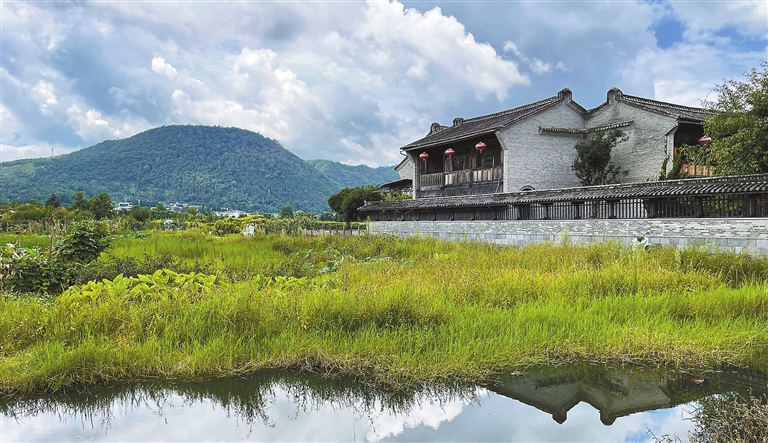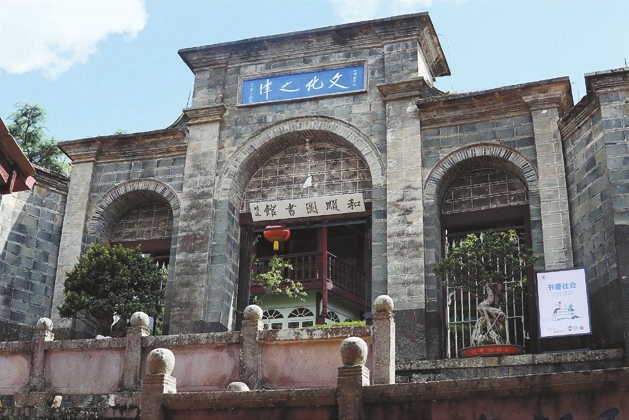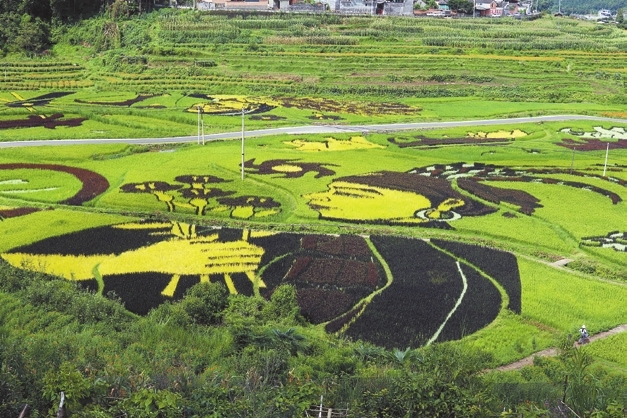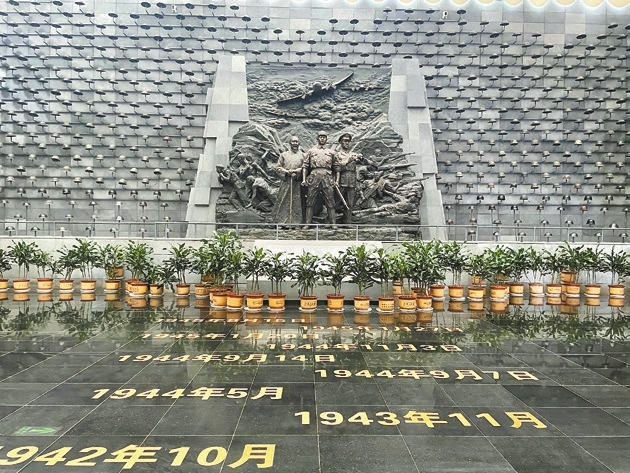



Yang Mei yangmei_szdaily@163.com WHEN we talk about Yunnan Province, you may think of the world-famous, most sought-after tourist destinations like Dali, Lijiang, Xishuangbanna and Shangri-La, which have become synonymous with a poetic and idyllic way of living for many urban dwellers. However, popularity means crowds. If it’s your first time to visit Yunnan and you want to avoid crowds, but still don’t want to miss its spectacular landscapes and diverse cultures, go further to the south to the lesser-known historical city of Tengchong on the southwestern edge of the province in western Baoshan City, and you will not be disappointed. Now with the newly opened Dali-Baoshan section of Dali-Ruili Railway, it is so much easier to reach the once isolated city. It takes around 3.5 hours from the province’s capital Kunming to Baoshan and around 1.5 hours from Dali to Baoshan, which is 167 kilometers away from Tengchong. At the Baoshan Railway Station, you can call a cab that will take you to Tengchong on a two-hour ride. And the weather may surprise you. The city sits at an elevation of 1,600 meters, and the annual average temperature is 15.1 degrees Celsius. Tengchong is an underestimated tourist city as it is endowed with a vast variety of natural resources, ranging from volcanoes to hot springs and from ancient towns to wetlands. Additionally, there are several cultural and historical attractions including Heshun Library and the Memorial Hall for Anti-Japanese War in Western Yunnan. Here are suggestions of some the best places to go in Tengchong: Heshun Ancient Town The small and remote ancient town of Heshun has a history of more than 600 years and is a “bright pearl” where many cultures of the southwestern Silk Road converged, connecting China with Myanmar, India and beyond. Heshun Ancient Town is not only a national 5A scenic spot, but also a place where most tourists would stay during their visits thanks to the large number of B&Bs there. Arched bridges, rice fields and winding canals in the town will remind you of the charming villages in the south of the lower reaches of the Yangtze River, while the distant volcanoes and hot springs bring you back to tropical vibes. Despite its small size, Heshun has one of the largest old libraries in rural China — Heshun Library. According to a travel handbook of Heshun Ancient Town, the predecessors of the library were the Xianxin Society founded by Cun Fuqing, member of Heshun Alliance in the late Qing Dynasty (1644-1911), and the Reading and Newspaper Society established in 1924. Donated books from overseas Chinese and local villagers helped it expand into a library in 1928, and the new library was completed in 1938. Thus far, the library has a collection of more than 100,000 volumes of books as well as over 10,000 volumes of ancient documents and rare editions of books. There are inscriptions of literary masters and educators including Hu Shi, Xiong Qinglai and Li Shizeng. Right in front of the Heshun Library is Heshun Alley, one of the most bustling spots in the town, which accommodates the Tea Horse Road Caravans Museum, Yunnan Merchants Museum, Overseas Business Museum, Ancient Papermaking Museum, and the Hometown of the King of Jade. These cultural venues provide a glimpse into the prosperity of Tea Horse Road, a southerly branch of the famous Silk Road, and of the glories of the Yunnan merchants. Simolar Wa Ethnic Group Village Deep in the magical and beautiful high mountains, forests and terraced fields lies the Simolar Wa Ethnic Group Village in the Qingshui Township, which is 13 kilometers from downtown Tengchong and five kilometers from the Tengchong Tuofeng Airport. With a long history of more than 500 years, the village currently has 74 households with a total reported population of 278. The Wa people worship nature, love singing and dancing, and consider the ox (a symbol of modesty and kindness in the Wa ethnic group culture) as their totem. In the Wa language “Simolar” means “a land of happiness,” which speaks true for the villagers’ lives nowadays given the fact that people’s income had increased, and livelihoods been greatly improved after President Xi Jinping’s visit in 2020 ahead of the Chinese New Year. Tengchong Thermal Sea Scenic Area Not far from the Simolar Wa Ethnic Group Village is another national 5A scenic spot — the Tengchong Thermal Sea Scenic Area. Tengchong boasts more than 80 hot springs locations in which the highest temperature reaches 96.3 degrees centigrade, and the scenic area is in the center of the geothermal region. Entering the scenic area, you will immediately feel the sultry air from the hot springs in the small valley, so it’s better to visit in the morning or in the evening when the temperature is relatively low. As you climb the valley, you will be greeted by different sizes of hot springs with distinctive mineral contents scattered along your way. On the top of the valley is the “hot boiling pot,” known as the king of the hot springs in the area. Before leaving, you can take a bath in the hot springs at the exit of the scenic area. Tengchong Beihai Wetland Situated at the southern slope of the Gaoligong Mountains, Tengchong Beihai Wetland is located 12.5 kilometers to the northwest of Tengchong City, and it is one of the first of 33 national key wetlands in China and the only national level wetland reserve in Yunnan Province. It has a total area of 16.29 square kilometers. Surrounded by beautiful mountains, the nature reserve is a paradise for nature lovers and birders as it is home to an astounding number of bird species and a particular type of aquatic grass that coats portions of the wetlands in a blanket up to one meter thick. According to a Jan. 18, 2021 China Daily article, in 2016, 84 purple swamphen, a chicken-sized bird, arrived there. In 2021, the number grew to more than 2,000. Tengchong Graveyards of National Heroes The area around Tengchong, near bordering Myanmar, was the location of deadly battles between the Japanese invading army and China Expeditionary Force during the Second World War, in which more than 6,000 enemies, 9,168 people from the expeditionary force and 19 people from the allied forces of officers were killed in the war. To commemorate those soldiers who had sacrificed their lives, the government has constructed the cemetery of national martyrs over a floor area of 38,774.5 square meters. The cemetery was first built in 1944 and was completed on July 7, 1945, the eighth anniversary of the Lugouqiao Incident. On the east side of the cemetery is the Memorial Hall for Anti-Japanese War in Western Yunnan. The three-story memorial compound houses more than 100,000 physical objects, making it the largest memorial on the mainland that commemorates the history of the China Expeditionary Force. | 
